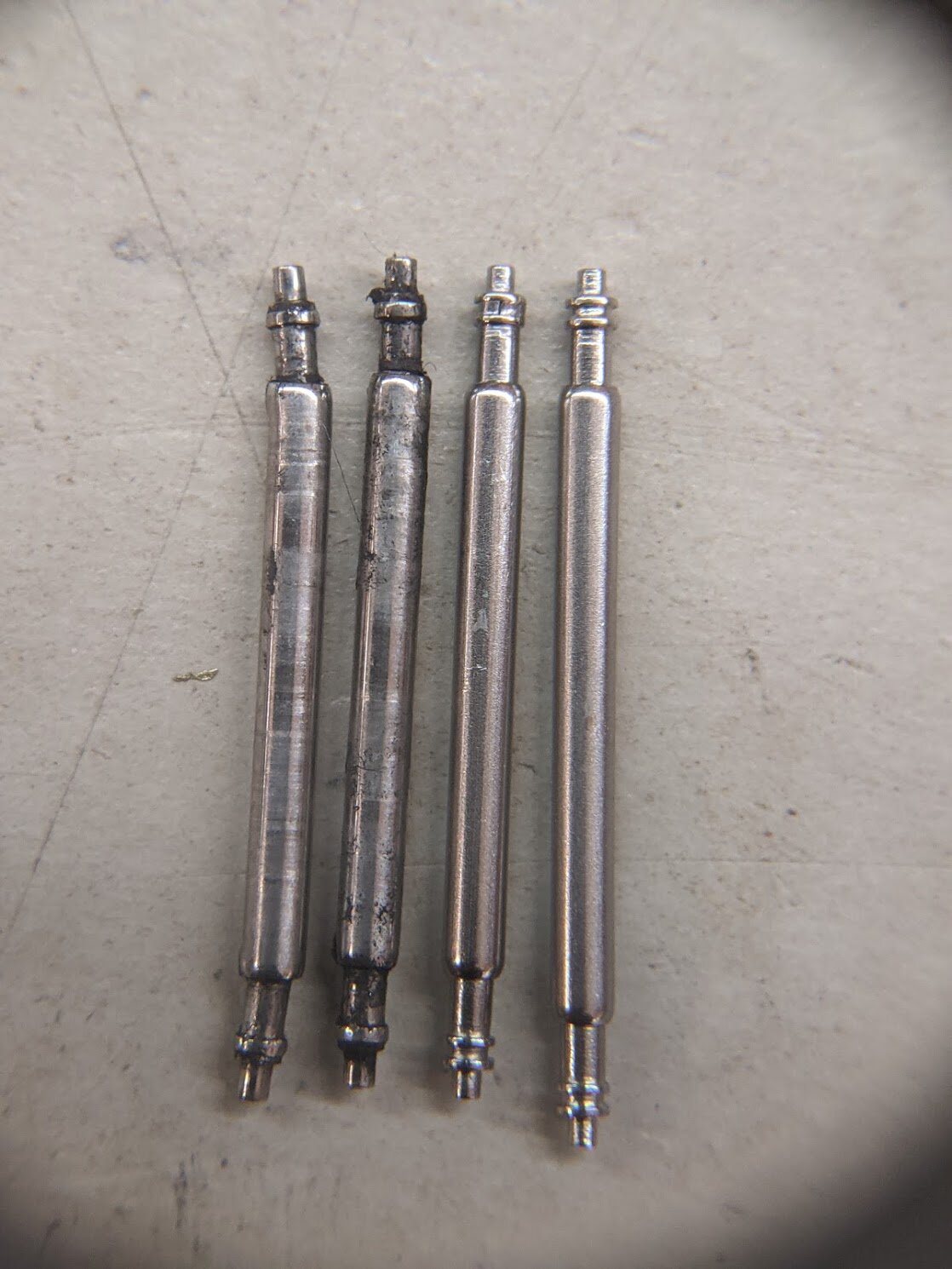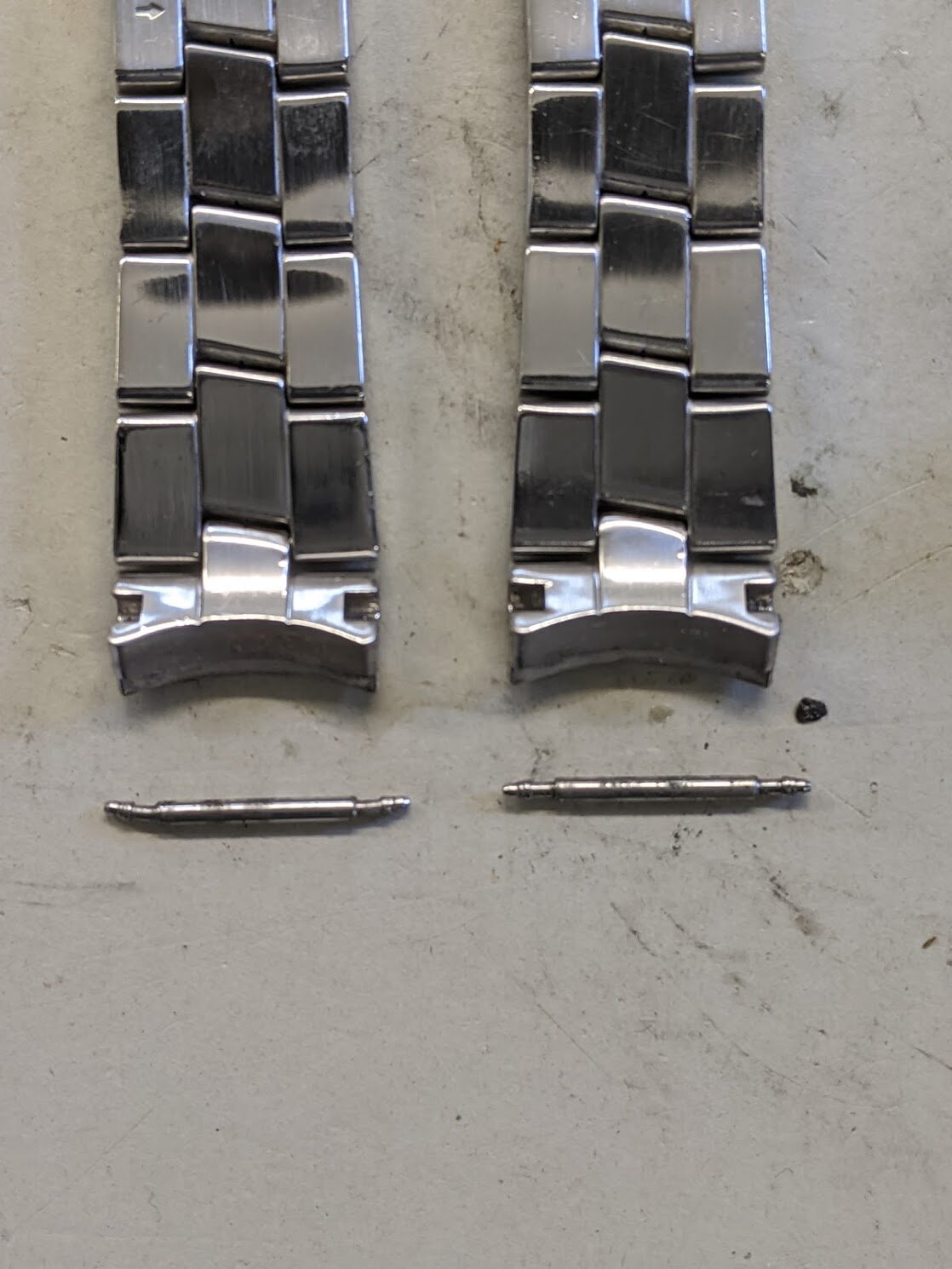When is a battery change not just a change of battery? When it’s done by a horologist who cares about your watch. I’m often asked why a battery change can’t be done in five minutes ‘like the guy at the shoe repair shop’ and the short answer is that if a job is worth doing, it’s worth doing properly.
As well as changing the battery in your watch, I will run some tests to the movement to ensure that the battery is the reason the watch has stopped, then clean the case and bracelet, and finally change the seals that keep dust, dirt and moisture out of your watch case to help make sure your watch lives on for as many years as possible.
Opening the watch and diagnosis
After opening the watch I can do a quick visual assessment of the movement. I’m looking for any signs of moisture ingress, battery leakage or any other damage. You will also see in the picture to the right that there is quite a lot of dirt and dead skin present around the black gasket. This has worked its way under the case back, and if the movement is not removed and the watch case cleaned properly, it can end up in the movement and cause damage or simply cause the watch to stop.
Next up is a piece of diagnostic equipment that helps me check several things - firstly if the old battery is actually dead. If the old battery is working fine than a quick battery change won’t solve anything. Next, I am able to check the consumption of the movement: this is the amount of power the movement pulls from the battery each time it ticks. If this is too high, the movement requires too much power and will drain the battery quickly. Generally, high consumption is a sign that a service is required. Finally I am also able to check the condition of coils for the motors if required, and the accuracy of the module, which is a check sometimes required on older quartz movements.
Case cleaning
Once I am happy that the battery is the problem and there are no further issues which will need to be addressed, I fit a new battery to begin the movement testing while I focus on the watch case. As mentioned above, dust and dirt working its way into the case can cause problems for the movement. Water or moisture ingress is worse and can also ruin the dial and hands. For this reason it is important to thoroughly clean all parts of the watch, and change all the gaskets and seals which keep the dirt and moisture out.
As well as protecting the movement, this usually means the watch looks way better, and can often mean things like jammed bezels usually work well again. It’s often the case that these are jammed by dirt and dead skin.
One final part I change every time I repair a watch is to change the spring bars. Over time these wear out and if left unchecked can eventually break - they’re a weak spot and not worth overlooking. You can see below how out of shape they can be, as well as how dirty and worn the old ones are compared to the new.
Finally with the case cleaned and reassembled, the movement can be fitted and the watch is put on a 48-hour test period. This is to catch any issues which may not have become apparent during the diagnostic testing and ensures that almost all watches that have their batteries replaced by me run exactly as they should for multiple years before needing attention once again.



